Hallway in a classic style: features and design options
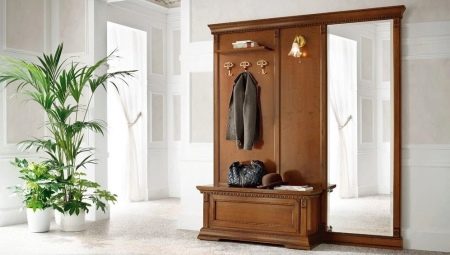
Entering any dwelling, a person first of all enters the hallway. This is a peculiar face of the house, which should immediately make a favorable impression. The functionality of the hall is quite wide - people who come to the house are greeted here, in addition, clothes and shoes are stored in the hallway. It is very important to equip the hall so that, in addition to aesthetics, it is also comfortable, convenient and practical. In addition, the entrance hall must be in harmony in style with other rooms in the house.
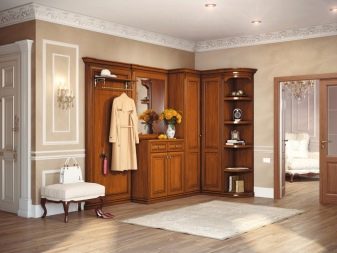
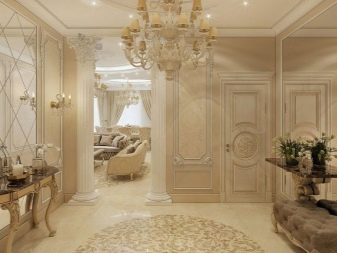
The designer is often faced with the difficult task of decorating a functional and beautiful hallway, since most often its area is very small. Therefore, it is necessary to think over the color scheme, choose practical furniture and arrange it correctly, choose a beautiful decor. And the main thing is to decide on the style. The classic design direction is one of the most popular. It combines aesthetics, showiness and elegant understatement.
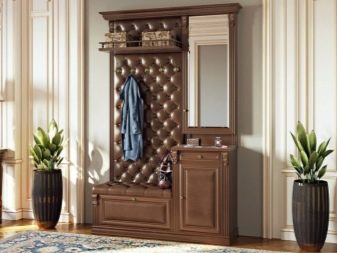
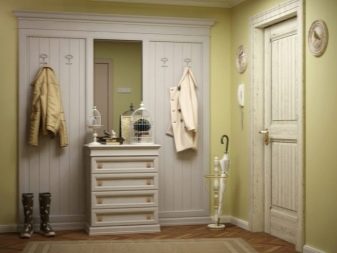
Peculiarities
The design of the hallway in a classic style is always in demand. Modern understated classics never go out of style. Decorating the corridor in this style does not mean copying the artsy interior of the palaces. Moreover, in small spaces, all claims to luxury usually look ridiculous. Modern classics are more loyal to the choice of materials and decoration. It is more practical.
Moreover, all the main features, characteristics of the classics are present in it. These are clear silhouettes and lines, symmetry, elegant colors.
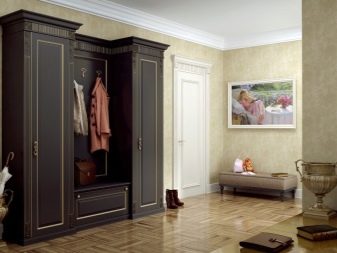
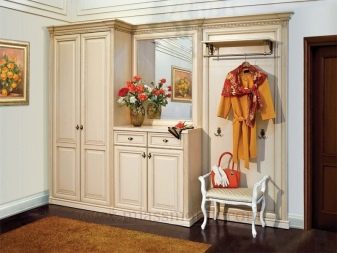
First of all, you must follow the rules, without which it is impossible to create a classic interior.
- Restrained colors. The classic is by no means a dull composition made in one boring color. You can choose several shades, but they should all be laconic, muted. Bright, contrasting combinations contradict this style. Rely on comfortable color perception, elegance.
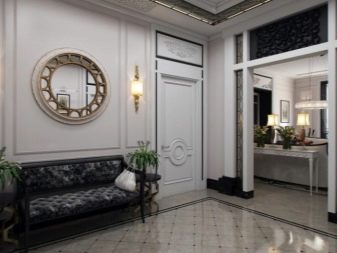
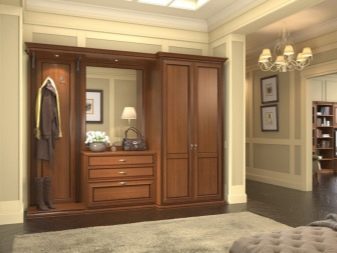
- Natural materials. This is one of the basic requirements of the classic style; you should not include plastic or synthetics in the interior. Natural materials: wood, weaving, stone - will make the design more status-conscious. Color and texture should be noble, non-flashy.
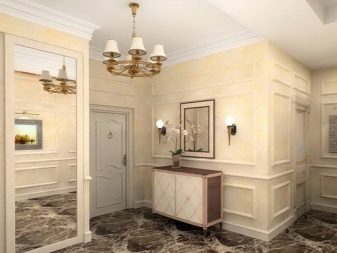
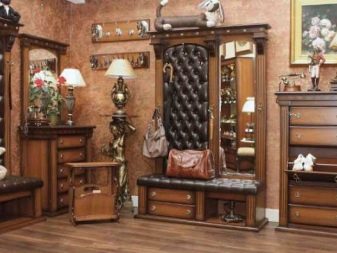
- Single composition. In the classics, all the elements are arranged around some central object. But in a small corridor, this requirement cannot always be met. In any case, the whole picture should be perceived organically.
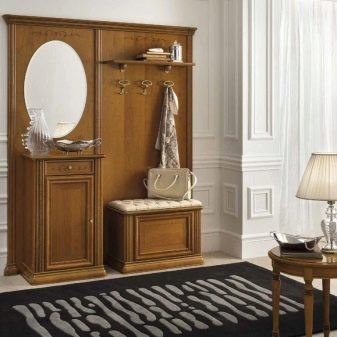
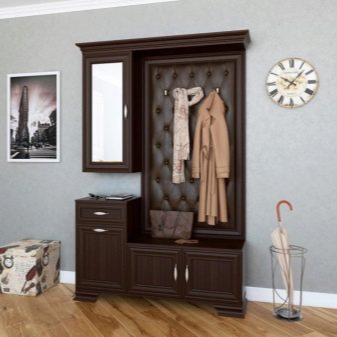
- Furniture and, in general, all items are chosen with symmetrical proportions, clear silhouettes. The decor is typical for the classics - carving, columns.
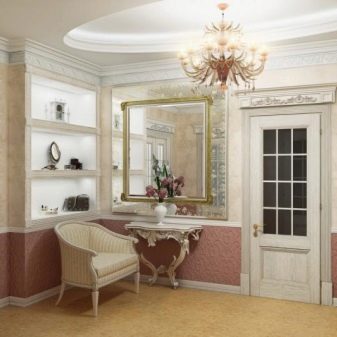

- Lighting should match the style. Ideally, think over lighting in several levels, and not be limited to the ceiling.
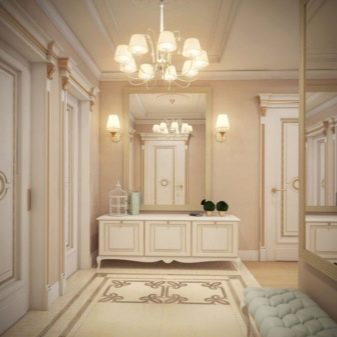

If the hallway is small, observe the following rules:
- give up the dark range in favor of monochrome light;
- you should not include carvings, stucco moldings and other complex structures in the interior;
- use all possible niches by placing storage sections in them;
- give up the dimensional models of furniture;
- choose a laconic chandelier.
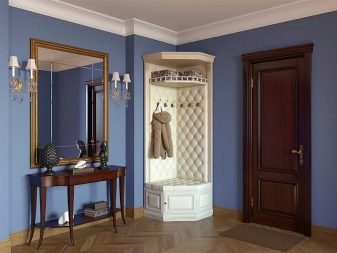
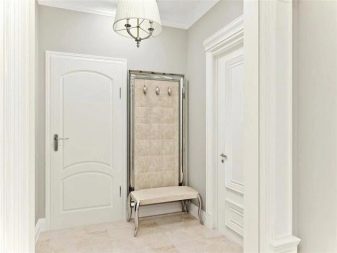
Color combinations
First of all, you need to decide on the color, and only then start buying finishing materials and furniture. So that the color composition does not contradict the style, the shades must be balanced in it.
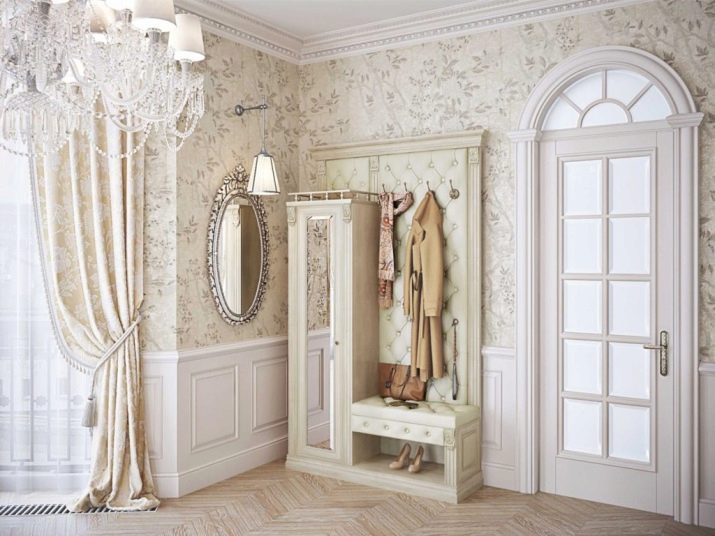
To choose a color, take as a basis austerity, neutrality and balance. Initially, you need to exclude acid palettes, bright colors, catchy scales from the selection.
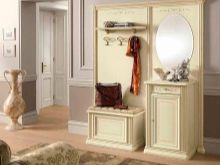

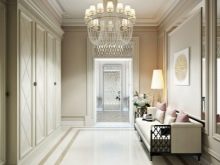
Only calm shades are allowed:
- sand;
- snow-white;
- cream, milk;
- coffee, cappuccino;
- pistachio;
- turquoise;
- pale yellow;
- Gray;
- Brown.
Designers do not recommend including more than three shades in the composition.
If you are not confident in your knowledge of color, take white as a basis. It will perfectly enlarge the corridor visually, in addition, it can be perfectly combined with other shades. Its only drawback is impracticality. The classic interior, depending on the color, can be either status, mature, or soft, romantic.
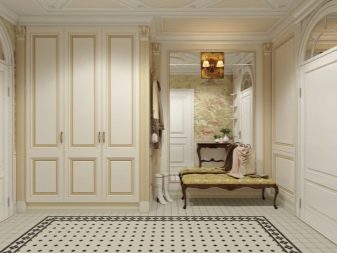

Neutral tones
The ideal solution for a classic hallway. Neutral tones mean muted shades of universal colors. Decor and other objects of a more saturated tone look great against their background. If you want to expand the space, go for white, light gray. But in the hallway, these shades are not very practical, so be sure to choose materials that are easy to clean.

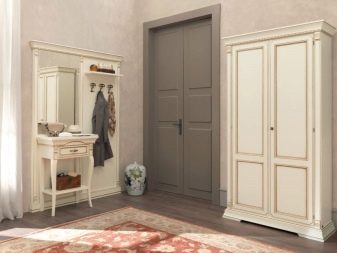
Pastel gamut
Allows you to create a softer, more delicate interior, pacify the severity of laconic shades, add relaxing notes to the composition. A serious interior will only benefit if you add tones of lilac, rose, jasmine, salad or mint, peach, blue as an addition. If you add white to the picture, then the hallway will be light, light, airy.
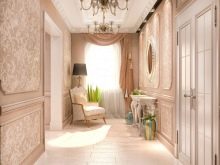
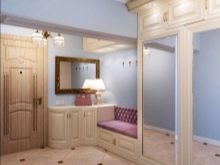
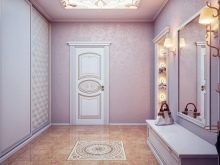
Saturated shades
Dark colors are not the best solution for a hall, especially if there are no windows in it. But if as the main one this scale can be quite controversial, then as an additional and accent one it is ideal. If you want to add dark notes to the interior, choose furniture and accents in this palette. This method will make the hallway not only stylish, but also status, solid. An unusual texture will help to emphasize the showiness of shades.
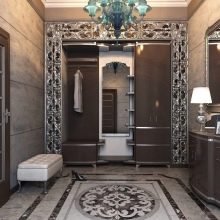
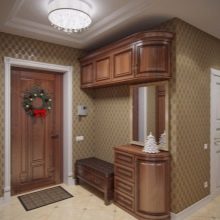
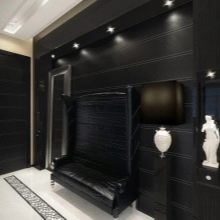
Nevertheless, you should be more careful when using dark colors, otherwise the hall will turn out to be cramped, dark, with a low ceiling.
Therefore, be sure to dilute dark tones with light ones, keep a balance.
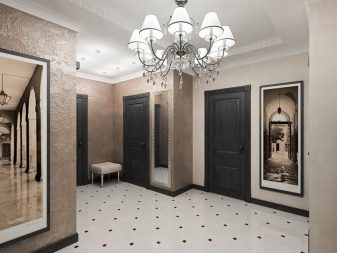
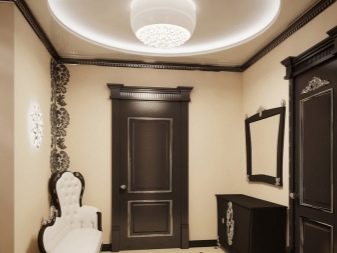
Finishing
For a small and large hallway, it is important to choose high-quality material that will match the classic interior. Of course, when choosing a design for a long, short hallway, square, rectangular hall, it is important to correctly place accents.
First of all, regardless of size, avoid excessive relief, complex textures and bulky decor. It is important that the finish is practical.
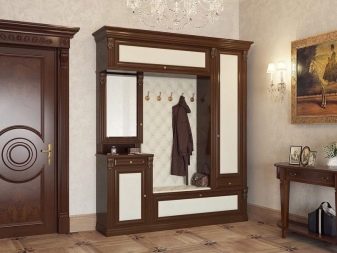

Floor
First of all, remember that the flooring must be organically combined with the floor in other adjacent rooms. Laminate, linoleum, tiles, parquet are very good for the hallway. The main thing is that the color and design correspond to the general idea. If you want to add a touch of luxury to your composition, choose marble or imitation marble.
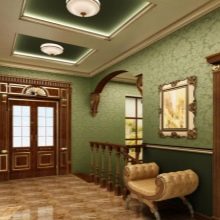
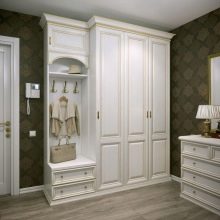
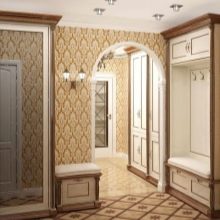
Walls
Wallpaper is the best solution for a classic hallway, especially since there are a lot of washable surfaces. The classic accepts fabric wallpaper well, but it is difficult to clean them. Despite the fact that they tend to get dusty, the look of such wallpapers is extremely spectacular.
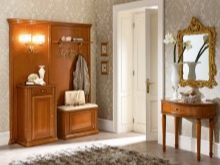
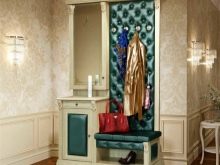
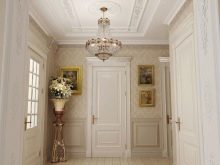
It is better to give up paper wallpaper in favor of vinyl, non-woven and other moisture-resistant materials. The palette, patterns and motives of such wallpapers are very diverse. This material is perfectly combined with wood panels. You can safely consider decorative plaster and paint.
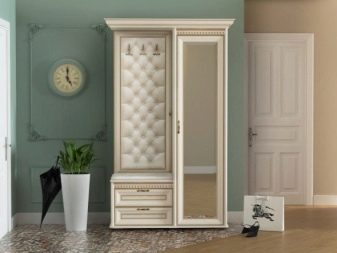
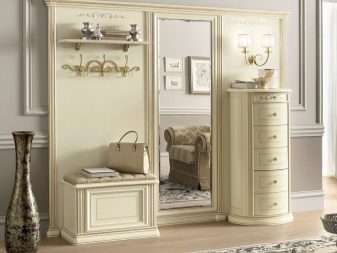
Ceiling
Despite the chosen style, 1-level and multi-level ceilings are in high demand. Here, first of all, you should focus on the area of \ u200b \ u200bthe room. Stretch canvas is a popular way to decorate the ceiling, it will hide flaws and look very aesthetically pleasing. Almost any kind of lighting can be installed. Drywall is another topical ceiling arrangement method, but it is only suitable for tall rooms.
In classic interiors, avoid glossy surfaces as well as colored designs.
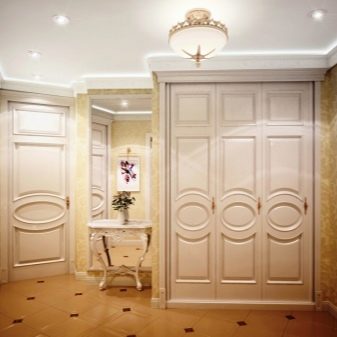
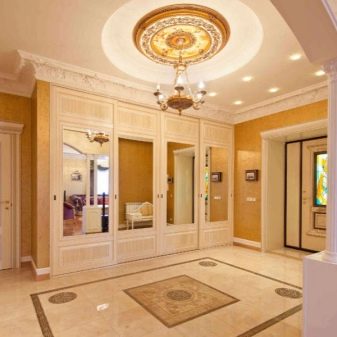
Furniture selection
The hallway most often includes a standard set of furniture that can vary depending on the area:
- wardrobe for clothes and shoes;
- full-length mirror;
- pouf, chair;
- chest of drawers, shoe cabinet.
The main thing is that the furniture in the hallway is practical and consistent with the general organic nature of the style.


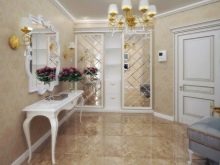
If the corridor is narrow and small, you can combine a chest of drawers, a galoshes, a section for storing clothes in one wardrobe and place a mirror inside. It is worth considering multifunctional wardrobes that hide a variety of things inside. Ideally, furniture should be made of natural wood or MDF. Carved legs, beautiful accessories, carving, stucco molding, painting, gilded elements will add zest to the overall composition.
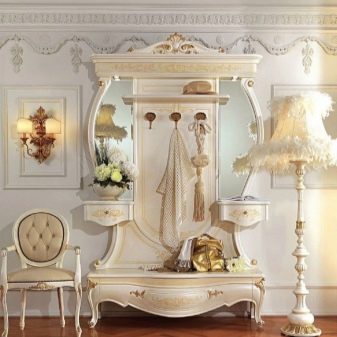
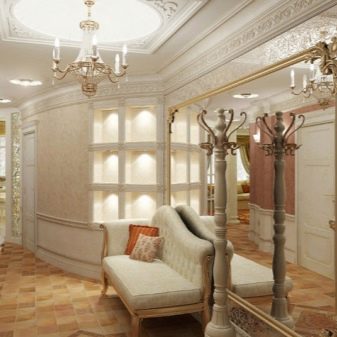
It is not enough to choose furniture, it is important to arrange it correctly. The classic style looks best in rectangular and square spaces. If the hallway is oval or round, it is better to refuse the classic style. The correct arrangement of furniture takes into account the basic rules:
- from furniture to the door should not be less than 10 cm;
- if the cabinet is opened in the usual way, you need at least 70 cm between it and the wall;
- it is better to zone a narrow corridor visually, but only if it is significantly elongated;
- the arrangement of furniture should be aesthetic and functional, a corner hallway is a very popular solution;
- Think about storage places - closer to the door of the bag, then an area for changing shoes, then a section for outerwear and a mirror.


Decor and textiles
The decoration of any room will not be complete without decorative elements. At the same time, even the overall hall does not leave too much space, so it cannot be cluttered with details. The decor in the classic hallway is used to a minimum. Try decorating the hall with moldings imitating palace stucco moldings. The textile upholstery blends very harmoniously with the classic design. If you are considering buying such furniture, then rely on textiles with floral motifs or the same ornament. It will attract attention and fit into the big picture.
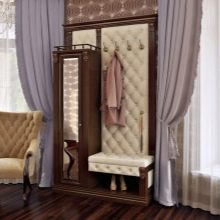
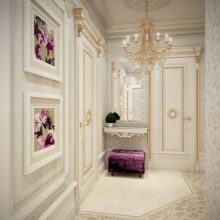

In a classic interior, there are no trifles that do not mean anything. The carpet at the door should be matched with the appropriate ornament. The floor mirror should be in an elegant, beautiful frame, you can use gilding. The same goes for the paintings on the walls. Plants look organic in a classic hallway, but it is better not to put them close to the door.
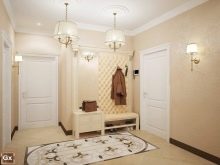

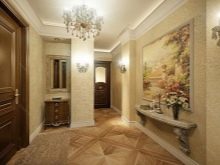
Consider a lighting system. In addition to the central overhead light, the role of which is played by a spectacular chandelier, mirror illumination should be provided. This role can be performed by a sconce on the wall, a floor lamp.
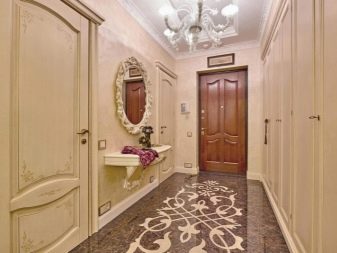

Beautiful examples
Here are some examples of beautiful hallway decoration. in classic style:
- a classic hallway in an apartment can be very effective, despite its modest purpose;
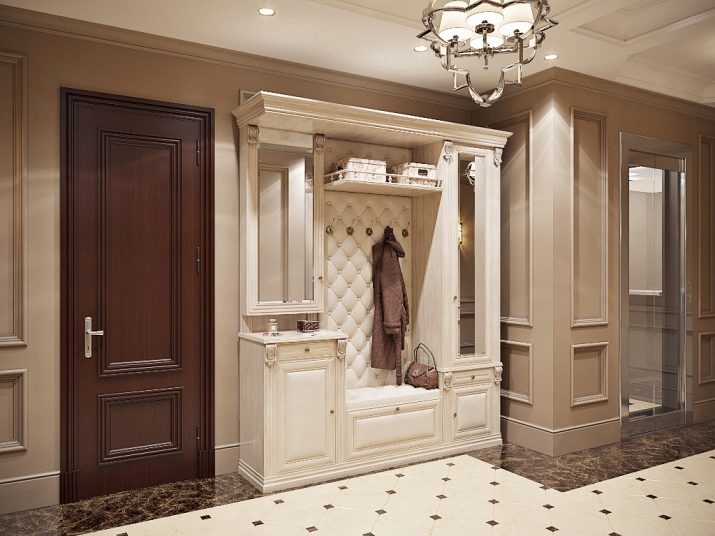
- white color is an ideal solution for a small hall;
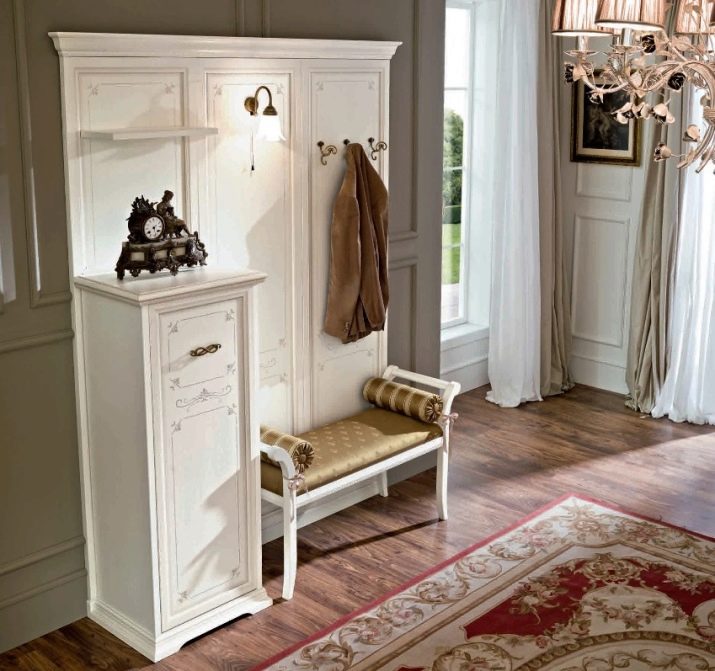
- in a country house, you can use any luxurious details, they will be appropriate in it;
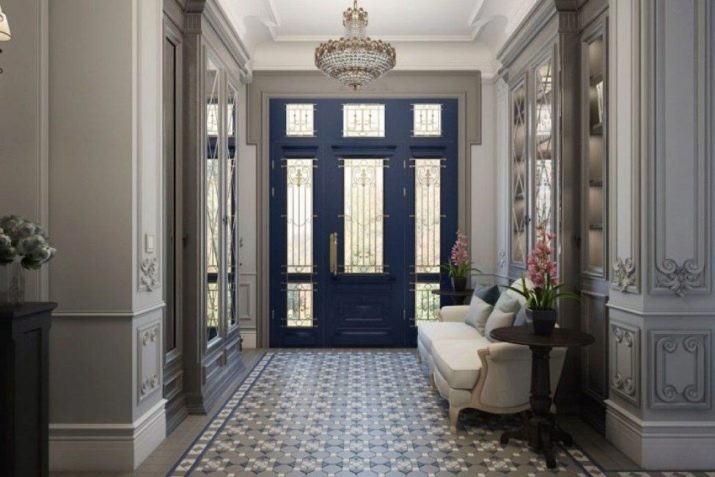
- a classic interior does not have to be strict and prim;
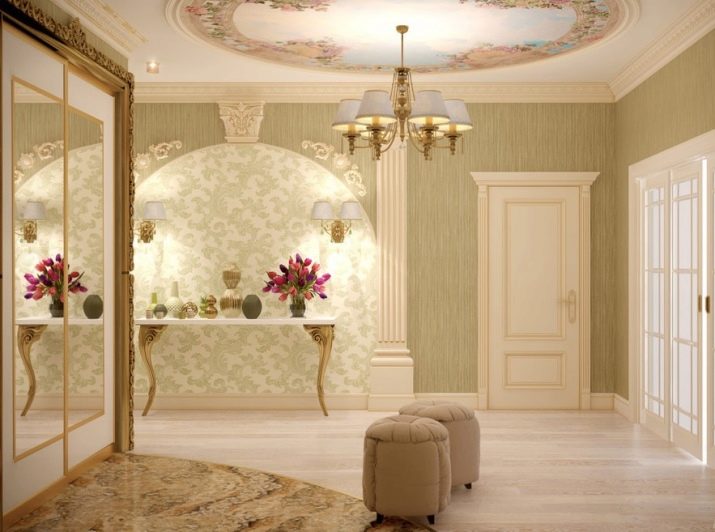
- the gray scale gives the classics a special nobility;
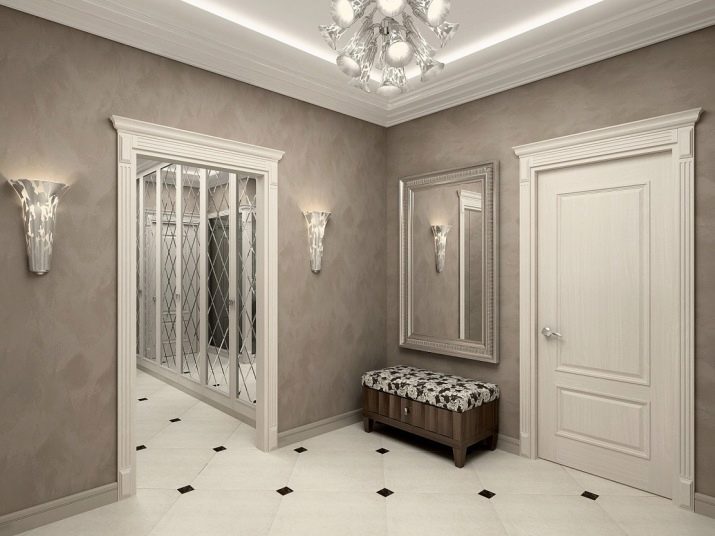
- a small hallway in the classic style looks very aesthetically pleasing and elegant.
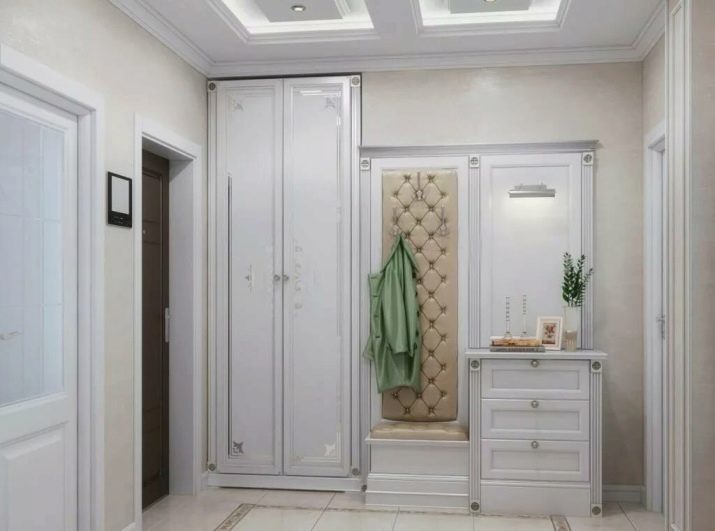
For a video review of a classic-style hallway, see the video below.








